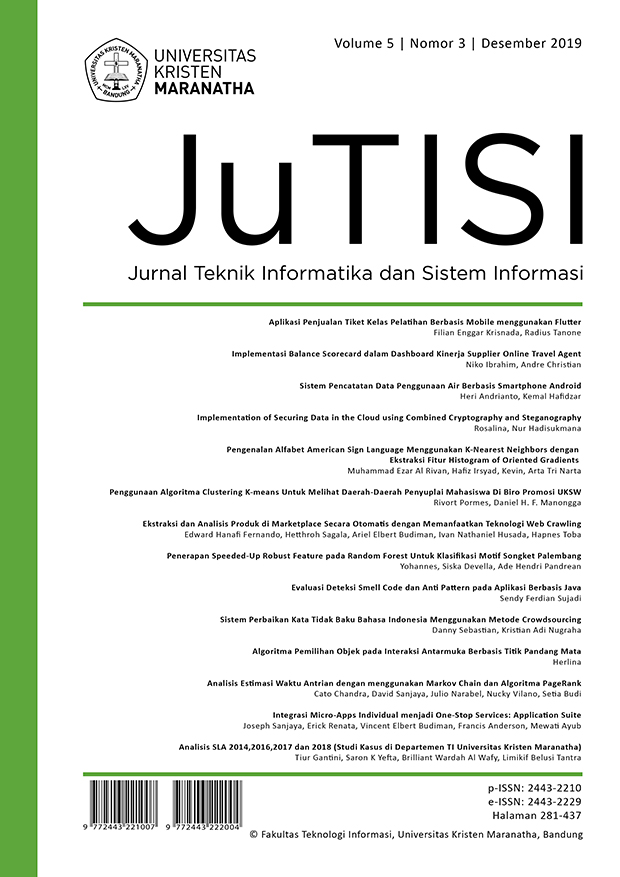Algoritma Pemilihan Objek pada Interaksi Antarmuka Berbasis Titik Pandang Mata
Main Article Content
Abstract
Eye tracking provides an alternative input modality to control the interactive contents in computers, particularly in assistive technology and public display. Instead of fixational eye movement, smooth pursuit eye movement has been used for object selection in gaze-based interactive applications. However, some previous works did not consider various similarity measures to match trajectory of eye movement and the presented dynamic stimulus. Furthermore, there was no correction towards the drift of eye movement during object selection. Hence, gaze-based object selection based on smooth pursuit eye movement is still inaccurate and unstable. To fill the research gaps, we proposed a novel approach for accurate gaze-based object selection using linear regression for eye movement’s drifting correction. We measured accuracy, success timing, and stability of object selection to validate performance of the proposed method. From the experimental results, object selection could be performed without the usage of chinrest using Euclidean distance, moving average and linear regression in gaze-based interfaces. The usage of chinrest did not give significant effect on accuracy, success timing and stability of object selection in gaze-based interfaces. The use of linear regression for predicting gaze points and correcting drift of eye movement has improved overall performance of object selection .In future, our results maybe used as a guideline for developing more accurate and more stable interactive applications based on smooth pursuit eye movement.
Downloads
Download data is not yet available.
Article Details
How to Cite
[1]
H. Herlina, “Algoritma Pemilihan Objek pada Interaksi Antarmuka Berbasis Titik Pandang Mata”, JuTISI, vol. 5, no. 3, Jan. 2020.
Section
Articles
This is an open-access article distributed under the terms of the Creative Commons Attribution-NonCommercial 4.0 International License (https://creativecommons.org/licenses/by-nc/4.0/) which permits unrestricted non-commercial used, distribution and reproduction in any medium.
This work is licensed under a Creative Commons Attribution-NonCommercial 4.0 International License.

